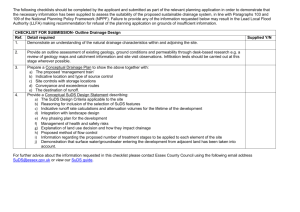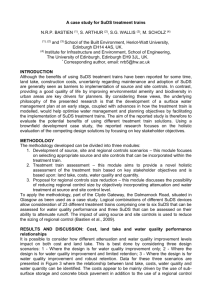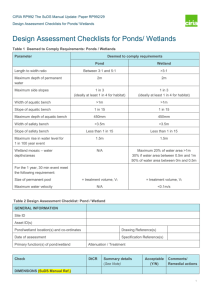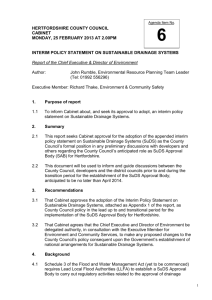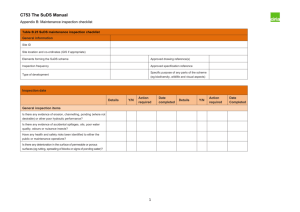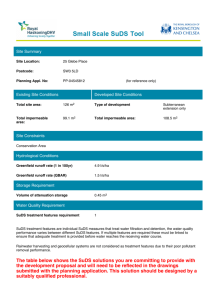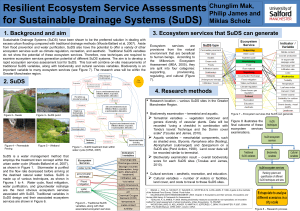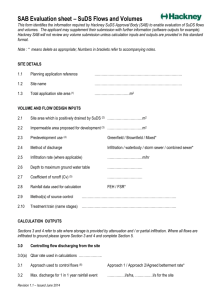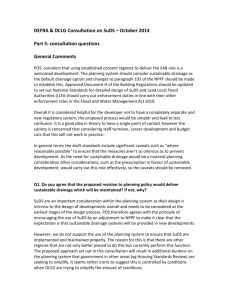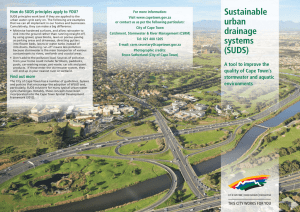DOC: suds information sheet
advertisement
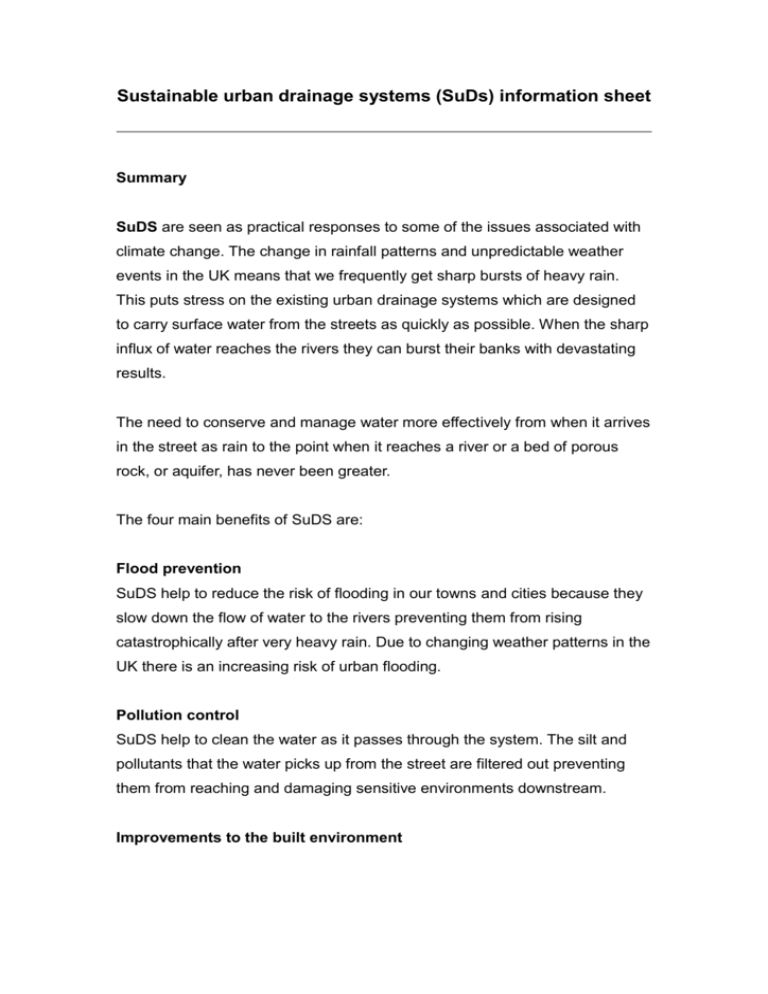
Sustainable urban drainage systems (SuDs) information sheet Summary SuDS are seen as practical responses to some of the issues associated with climate change. The change in rainfall patterns and unpredictable weather events in the UK means that we frequently get sharp bursts of heavy rain. This puts stress on the existing urban drainage systems which are designed to carry surface water from the streets as quickly as possible. When the sharp influx of water reaches the rivers they can burst their banks with devastating results. The need to conserve and manage water more effectively from when it arrives in the street as rain to the point when it reaches a river or a bed of porous rock, or aquifer, has never been greater. The four main benefits of SuDS are: Flood prevention SuDS help to reduce the risk of flooding in our towns and cities because they slow down the flow of water to the rivers preventing them from rising catastrophically after very heavy rain. Due to changing weather patterns in the UK there is an increasing risk of urban flooding. Pollution control SuDS help to clean the water as it passes through the system. The silt and pollutants that the water picks up from the street are filtered out preventing them from reaching and damaging sensitive environments downstream. Improvements to the built environment SuDS provide pleasant features in the urban landscape that can be both useful and attractive amenities for the benefit of the population. This helps to enhance the well-being of residents. Wildlife benefits SuDS create habitats for wildlife at the same time as helping to preserve the qualities and biodiversity of the habitats downstream. Further biodiversity benefits will come from the creation of wetland areas encouraged by better water quality. SuDS in a local environment Some of the components of SuDs that can be seen in the local environment are: Buildings with green roofs and living walls. These allow rain to be harvested, holding and slowing the passage of rain water. Surfaces that allow water to drain through naturally into the soil beneath. The deliberate channelling of water into wetland areas and rain gardens by means of ditches and swales (shallow grassed ditches that channel rainwater slowly) allowing water plants and animals thrive. Temporary or permanent ponds constructed in parks and public open spaces. Systems to clean and filter the often polluted run-off from road, pavements, car parks and cycle ways. The enhancement of school environments by the use of SuDS techniques. Beneficial to the environment and economical as well as providing an outdoor learning opportunity. Case Study - How can SuDS be used on a primary school site? Incorporated in the design of a school in the Midlands are several interconnected SuDS features: Swales. These collect the flows of water from the school site and car park and playground run-off. Detention basin. The main drive drains into this. The water gathers here before it moves into the wetland. Rainwater harvesting. Rainwater is channelled directly from the roof into the system and finally into the wetland. Constructed wetland. The water is channelled from the swales and the basin into a constructed wetland. This provides both an amenity and an educational opportunity. Factored into the design and construction of this system was the need to cope with severe weather events, such as storms, that might only happen once a century. The system works by gravity. The features were planned using the natural slopes on the site so that no pumps were needed to move the water around. Follow this link to see pictures of living walls: http://www.environmentalgraffiti.com/ecology/15-living-walls-vertical-gardenssky-farms/1202?image=2 Follow this link to see more about green roofs: http://www.bbc.co.uk/nature/uk/indepth/green-roofs.shtml © Brin Best and Steve Padget 2014

